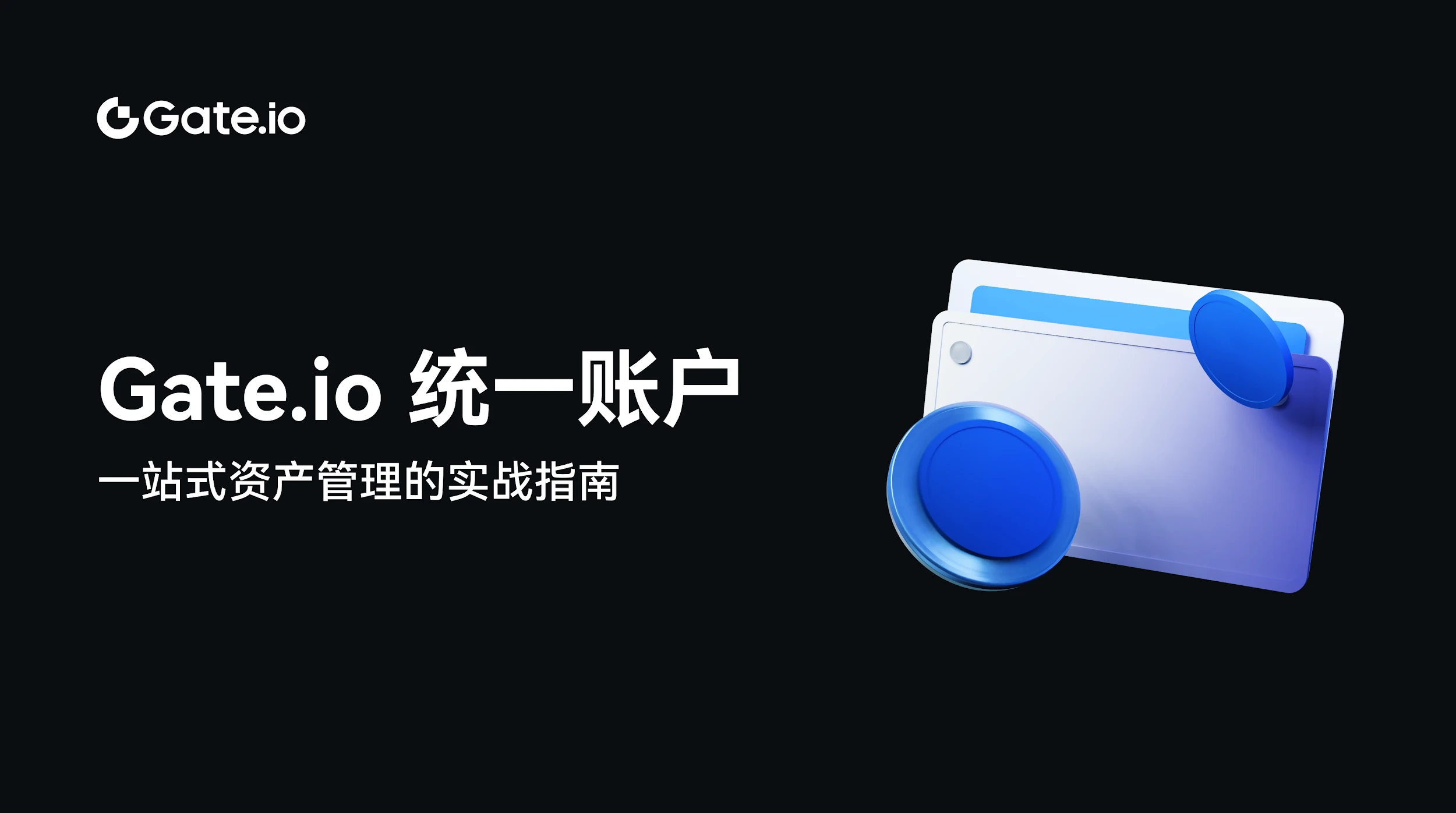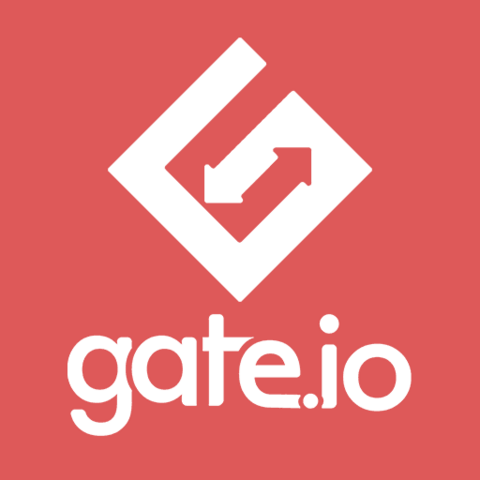
In the field of digital asset trading, traditional multi-account management has always been a problem faced by traders. Funds are dispersed, operations are complicated, and the threshold for cross-product transactions is high. These problems have seriously restricted trading efficiency.
The emergence of Gate.ios unified account has brought a breakthrough solution to this dilemma. With the concept of All-in-one, it has created a trading hub that integrates multiple functions, aiming to help traders explore more trading possibilities and balance efficiency and risks. This article will deeply analyze the functions and practical application scenarios of the unified account, helping traders improve capital utilization and achieve one-stop asset management.
Gate.io Unified Account: A Tool to Improve Efficiency and Manage Risks
The core value of Gate.ios unified account is to bring significant benefits and convenience to users. It supports 160+ assets as collateral, margin sharing between different business lines, offsetting profits and losses of different positions, and unrealized profits can even be used directly as margin to open positions. This design maximizes the efficiency of capital use, allowing each fund to play a greater value.
At the same time, the complexity of Gate.io unified account operation is greatly reduced. Users can directly trade four major products under the unified account: spot, leverage, USDT perpetual contracts, and options. There is no need to transfer funds back and forth between multiple accounts, which greatly simplifies the operation process.
In addition, centralized risk management is also a highlight of the unified account. As long as the total assets in the account meet the initial margin and maintenance margin requirements, users can continue to open or hold positions. The system will calculate the risk rate globally to effectively avoid the chain reaction caused by a single product explosion.
Four modes of unified account: accurate matching of different transaction needs
Classic spot mode: ideal for beginners and conservative investors
The risk level, learning cost and capital utilization rate of the classic spot model are all at a medium level, and it is suitable for the following types of users: novice users, who usually lack leverage trading experience and have low risk tolerance; long-term coin holders who focus on hoarding spot; and fiat currency traders who only purchase cryptocurrencies with fiat currency and hold them for a long time.
In a unilateral up or down market, users can directly conduct spot transactions without using leverage to amplify returns or risks. In addition, small-amount trial transactions are suitable for beginners to familiarize themselves with platform operations and avoid interference from complex functions. At the same time, stablecoin financial management is also a highlight of this model. Users can deposit stablecoins such as USDT and USDC to earn current interest without using leverage.
In terms of trading strategies, spot fixed investment is a common choice. Users can buy BTC, ETH and other mainstream currencies regularly and hold them for a long time to spread the cost and reduce the risk of market volatility. Grid trading sets price ranges in the spot market to achieve automatic low-buy and high-sell, which is suitable for users with certain experience. In addition, cross-platform arbitrage is also a feasible strategy. Users can use the price difference between different exchanges for spot arbitrage, but they need to transfer funds manually.
Single-currency margin model: a stable choice for low-leverage trading
The risk level, learning cost and capital utilization rate of the single-currency margin model are all at a medium level. It is mainly aimed at the following two types of users: contract novices, who are trying leveraged trading for the first time and usually hope to accumulate experience while controlling risks; and directional traders, who have a clear judgment on the market trend of a certain currency and hope to magnify their profits through leveraged trading.
In terms of operation strategy, this mode supports low-leverage and stable transactions. Users can choose 2-5 times leverage to operate, thereby effectively reducing the risk of liquidation. In specific transactions, one-way leverage opening is the basic operation: users open long orders when bullish and short orders when bearish, and use USDT as margin. In addition, batch stop-profit and stop-loss are also commonly used strategies. Through step-by-step orders, users can gradually lock in profits and control risks in market fluctuations.
The single-currency margin mode only supports USDT as margin, which can safely isolate spot assets of other currencies, allowing users to manage trading risks more conveniently.
Cross-Currency Margin Model: An Efficient Strategy for Multi-Currency Trading
The risk level and learning cost of the cross-currency margin model are both at a medium-to-high level, but the capital utilization rate is high. It is suitable for the following types of users: multi-currency holders who hold multiple assets such as BTC, ETH, SOL, etc., and hope to improve trading efficiency through efficient capital utilization; arbitrage traders who focus on arbitrage using the price difference between different currencies, such as making profits through BTC/ETH exchange rate fluctuations. At the same time, this model is also suitable for users who are proficient in spot arbitrage or funding fee arbitrage; in addition, this model is also an ideal choice for mid-to-high-level users who are familiar with leverage mechanisms and can effectively manage multi-currency mortgage risks.
In terms of application scenarios, this model supports multi-currency mortgage lending. Users can use assets such as BTC as collateral to borrow USDT to trade other currency contracts, thereby optimizing capital allocation. At the same time, this model also supports cross-currency hedging operations, such as holding ETH spot while opening a BTC contract short order to hedge systemic risks. In addition, users do not need to frequently exchange currencies, and can directly use the position assets as margin, further improving the flexibility of funds.
In terms of trading strategies, cross-margin arbitrage is the core application. Users can arbitrage by mortgaging one currency (currency A) and opening a contract of another currency (currency B). At the same time, users can also magnify the utilization rate of funds through the cycle of mortgage-borrowing-remortgage, but they must pay attention to controlling risks.
It should be noted that the mortgage discount rates of different currencies vary. Users need to pay close attention to the fluctuations in the collateral prices to avoid insufficient converted margin due to price changes, which may lead to potential liquidation risks.
Portfolio Margin Model: The Ultimate Solution for Professional Trading and Complex Strategies
The risk level of the combined margin model is relatively high, and the learning cost is also at a professional level, but its capital utilization rate is extremely high, which is suitable for the following two types of users: option traders who focus on trading complex derivatives such as options; and institutional and professional traders who need complex risk control measures to maximize capital efficiency.
In terms of trading strategies, Delta neutral strategy is one of its core applications. By combining spot, contract and options, the overall Delta is close to zero, thereby reducing the impact of market directional fluctuations. On the other hand, volatility arbitrage is also an important strategy. Users can use options cross-cycle or cross-strike arbitrage to make profits.
However, it is worth noting that the combined margin model requires extremely high professionalism from users. Users need to be proficient in the value-at-risk (VaR) model and stress testing methods to effectively manage complex risk exposures. Therefore, this model is only suitable for professional users with high net asset value and rich trading experience.
Open a new chapter of efficient trading and risk management
Gate.io unified account is a must-have tool for efficiency traders. By choosing different modes reasonably, users can find the best balance between risk and capital efficiency and maximize the adaptability of trading strategies. Whether novice users or professional traders, they can find a trading method that suits them in the unified account to achieve efficient asset management and effective risk control.
Disclaimer
This content does not constitute any invitation, solicitation, or recommendation. You should always seek independent professional advice before making any investment decision. Please note that Gate.io may restrict or prohibit all or part of its services from restricted regions. Please read the User Agreement for more information, link: https://www.gate.io/en/user-agreement .










